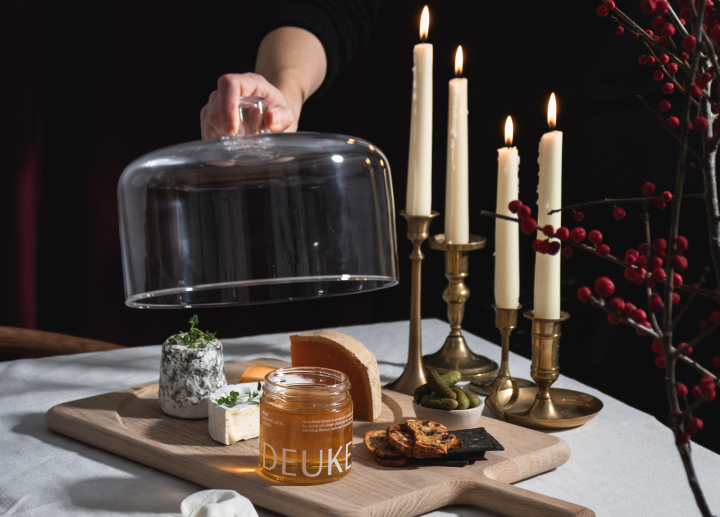Recently, among honey lovers, the term raw and unpasteurised honey is becoming more frequently used so we decided we will bring some clarity over this subject. In this article, we aim to briefly explain the difference between these two types of honey and how you can make conscious choices when buying honey.
Difference between Raw Honey and Pasteurised Honey
Raw honey is basically honey which has not been thermally treated. This type of honey includes particles of pollen and propolis that increase its nutritional value. The process of obtaining raw honey consists of three stages. First stage is by extracting the honey from fully covered and matured honeycombs. Second stage is filtering it through nylon or food grade stainless steel filters, to be cleaned of any remaining wax and debris. Then, at the final stage honey is decanted for 24 hours so that finally the raw honey is bottled and ready to be enjoyed.
By comparison, the majority of honey sold in stores are pasteurised at high temperatures to keep them fluid throughout their advised shelf life of two years. (By the way, honey is one of the few foods on Earth that does not spoil or rot). The pasteurisation process itself, which consists of several stages, aims to eliminate the live bacterias contained in honey and “improve” its commercial aspect. Pasteurisation takes place at over 60 degrees C, which has the effect of reducing the moisture level, destroying the glucose crystals and yeast cells. As a result, the honey loses its natural ability to crystallise and the shelf life (fluidity) of pasteurised honey is extended. After pasteurisation comes filtration, which also represents the excessive decantation of honey. At this stage, impurities such as debris and air bubbles are removed, so that the honey remains clear and liquid for longer. Some types of pasteurised honey are further processed by ultrafiltration, a refining process to make the honey more transparent. All of these processes are meant to clarify the honey, but unfortunately, it removes the nutrients, healthy enzymes and antioxidants.
Which honey is more nutritious?
As mentioned previously, pasteurised honey lacks nutrients and antioxidants due to the extensive pasteurisation process. In numbers, raw honey contains 4.3 times more nutrients than processed honey. The nectar and pollen found in raw honey has healthy benefits, thanks to the 250 nutrients from which about 22 amino acids, 31 different minerals, a wide range of vitamins, essential fatty acids, enzymes and 30 categories of bioactive plant elements, called polyphenols, which act as antioxidants.
Thanks to the nutrients, pollen has been recognised in Germany as a medicine, and in the resources published by the National Library of Medicine of the United States of America, the benefits of pollen are reconfirmed. Unfortunately, processing methods such as heat treatment and ultrafiltration can remove bee pollen along with its healthy benefits.
How to identify Raw honey?
In local supermarkets, pasteurised honey dominates the shelves, but there are also happy cases when retailers offer healthy alternatives and support local producers. To be sure you make the right decision, study the label. Beekeepers who produce raw honey mention this fact on the product label. Look for the inscription "raw", "unpasteurised" or “unheated”. The words "organic" or "natural" does not mean it is unpasteurised, make sure you seek the description of the methods used for processing.
After you have analysed the label and identified the necessary notions, take a closer look at the honey itself. Raw honey has a cloudier and creamier texture than regular honey. Sometimes consumers have the false idea that this honey is not good because of the way it looks. However, the reality is completely different. The raw honey will crystallise, and to stop the process you need to put the jar in warm water (maximum 40 degrees C) until it becomes liquid again. It is important to keep the temperature in mind so you do not remove the nutrients.
At DEUKES, we know how incredible different varieties of honey can taste. Rich. Sweet. Earthy. Deep. Woody. Our collection of raw monofloral varieties, each with a distinct taste and harvested using sustainable practices.
Nothing added. Nothing taken away. Nothing lost.
Every jar is as the hive intended, full of flavours that take you back to field, forest or meadow with every spoonful. And rich in health benefits that have been known of for centuries.
Dip in. And taste the story unfold.



